Different Types of Thermometers: Medical and Home Uses
April 24, 2023
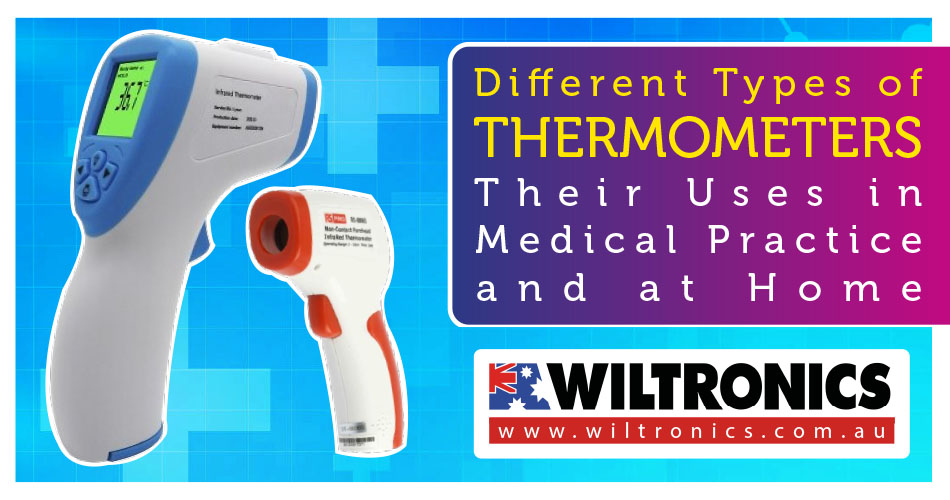
We can determine if a person or object is hot or cold by touch. But what we cannot know for sure is the exact temperature unless you check it using a thermometer. A device that offers an accurate means of taking someone’s temperature rather than using the back of the hand. We have come a long way in the field of temperature measurement. From traditional mercury and spirit thermometers to digital ones, by way of example. They have paved the way for the different types of thermometers we see today.
Knowing the right one for various situations can be crucial in monitoring your health. Keep reading to learn what is ideal for medical and home use and when to use them.
Body Temperature and Thermometers
Body temperature is one of the four key vital signs of the human body. It can be monitored by general practitioners (GPs) or by you at home using a thermometer.
Thermometers are an accurate reading tool for a person’s temperature. It used to be a primary medical instrument but is now also utilised in domestic settings. They have increased their value over the years, particularly during the onset of COVID-19. On the whole, this has led to many new types of thermometers, offering a safer way of screening for fevers.
What is a Normal Body Temperature?
A normal human body temperature is around 37 degrees Celcius (°C) or 98.6 degrees Fahrenheit (°F). But keep in mind that there can be slight variations depending on factors such as:
- age
- gender
- time of day
- activity level
The body temperature is usually lower in the morning, and it increases throughout the day. It can reach its highest point in the late afternoon or evening, from 36.1°C (97°F) to 37.2°C (99°F).
Monitor your body temperature regularly. Seek medical help if you experience any significant changes or symptoms.
What temperature is a fever?
A temperature of 38°C (100.4°F) or higher is generally considered a fever. However, this may vary depending on age and underlying health conditions.
For instance, a fever in an infant may be considered a temperature of 38°C (100.4°F) or higher. Meanwhile, a fever in an older adult with chronic conditions may be considered a temperature of 37.2°C (99°F) or higher.
Suppose you have a fever, and it lasts for more than a few days. It is vital to seek medical attention, especially if other symptoms accompany it. These may include difficulty breathing or severe headaches.
Different Types of Thermometers
Thermometers types have increased to aid and measure body temperatures. Each of these medical tools has its unique features and uses. The different types of thermometers do not only apply to clinical but also to domestic uses.
1. Digital Thermometers
Digital thermometers are regarded as the fastest and most accurate type available. The modern construction features a mini display, showing the body temperature digitally. They work by using electronic heat sensors to measure temperature. Reading on internal body temperature models can be taken under oral, rectal, or underarm temperature measurements.
Non-internal temperature models (see 3. IR Thermometers) can be used for non-contact body temperature or other surface temperatures. They can be suitable for use in hard-to-reach places or hazardous areas. Most come with an in-built laser pointer and rapid detection function.
Digital Thermometers are available in most local pharmacies and retail stores like Wiltronics. Ideal use for hospital, at-home, and industrial settings.
2. Spirit & Mercury Thermometers
Spirit and Mercury Thermometers use the effect of heat on different materials (alcohol and mercury) to determine temperature. They are ideal for determining the temperatures of liquids as they can be submerged without risk of damage.
You can find out more in our article on Spirit Thermometers.
3. Infrared Thermometers
Infrared thermometers are non-contact thermometers that use infrared technology to measure body temperature. This makes them safe and hygienic. They also provide instant readings that you can easily record and analyse.
They are used in medical settings to get the readings without touching the patient. In-home settings, they are also used to measure the temperature of objects such as food, water, and air.
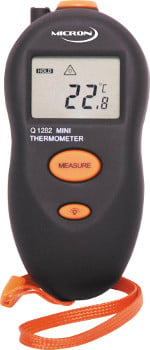
IR Thermometer
No longer available
Product code: ATQ1282A
Reading temperatures is easy and convenient with this IR Thermometer. Firstly, aim the IR Thermometer at what you wish to measure, and then pull the trigger. Next, the temperature will be displayed for you on the easy-to-read display. Ideal use for industry, food safety and more.
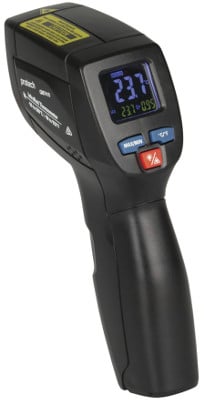
Economy Non-Contact Digital Gun Thermometer
Product code: JQM7410
This digital thermometer is compact and easy to use. It features a built-in laser pointer to target the surface. Simply point the built-in laser at the target area and read the temperature on the backlit LCD screen.
Note: This unit only measures surface temperature, not internal body temperature.
4. Ear Thermometers
Ear thermometers use infrared technology to measure the temperature inside the ear canal. Also known as tympanic thermometers, they tend to be less accurate than digital ones. If there is too much wax in the ear, for instance, this may give an incorrect temperature measurement.
They are common in medical settings and are a lot easier to use on infants and young children. But in mind that they need proper placement inside the ear canal to get accurate readings.
5. Forehead Thermometers
Forehead thermometers are non-invasive devices used to measure body temperature. They work by using IR technology to detect the heat radiating from the forehead.
Many workplaces and public spaces use it to screen for fever, which can be a symptom of COVID-19. Also, for reducing the risk of spreading germs, such as in schools.
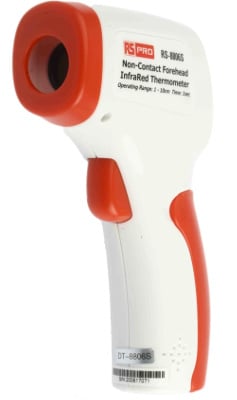
Forehead Thermometer – Non-contact, Infrared
Product code: ME3043
On top of its fast response in 0.5 seconds, this thermometer can store the last measurements of up to 32 data points. Medical grade with selectable C°/F° and backlight LCD.
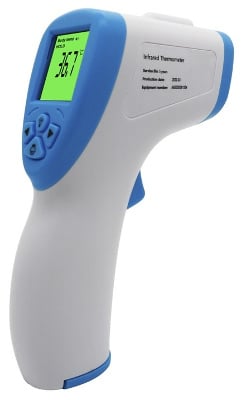
Non-Contact Thermometer, Infrared with Fever Alarm
Product code: ME3041
Get fast, accurate temperatures with this non-contact thermometer. It features an automatic fever alarm at ≥38°C and a large backlit screen display for clear reading.
Choosing the right thermometer depends on the purpose of use, accuracy, and ease of use. Follow the manufacturer’s instructions to ensure accurate readings and prevent any potential risks.
The Bottom Line
Thermometers measure temperature in different ways and for different purposes. Some are designed for use in measuring body temperature. While others are ideal for use in food and beverages or industrial settings in general.
Understanding the different types of thermometers to use in different situations is key. This helps you ensure you are measuring temperature accurately and safely.
This article was originally published in March 2021 and has been updated.
© Wiltronics Research Pty Ltd 2023
Write a Comment
You must be logged in to post a comment.